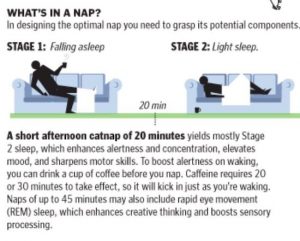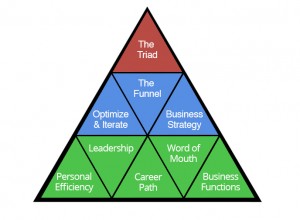If you’re enthusiastic about what you’re doing — if you find it interesting and worthwhile — you’ll naturally put your best effort into it. This is just human nature; ask anyone who spends hours of their free time breeding specialty orchids, tying flies for fly-fishing, or creating complex knitting patterns. Your challenge as a manager is to generate this same focused energy among your employees for their work tasks. Success in this endeavor for an engaged workforce is a basic necessity for any company’s financial resilience. With just 19 percent of employees who consider themselves “very engaged” at work, now is the time to to strengthen your understanding of why your company needs an engaged workforce. Here are seven good reasons why:
1. Your business results will improve
You may not see a direct line connecting your employee engagement level and your stock price, but it is there. According to an Aptitude Research Partners report, companies identified recognition as having the greatest impact on employee engagement. And companies that invest in social recognition see an improvement in business results across the board: four times more likely to improve stock prices, two times more likely to improve NPS scores, and two times more likely to improve individual performances. If you want to improve your bottom line, turn to employee recognition and engagement.
Bonus tip: Frequently recognize your employees to boost employee engagement. Achievers data shows that every time organizations double the number of recognitions in their organization, their overall engagement is expected to go up five percentage points.
2. You will build customer loyalty
Achievers’ Chief Customer Officer, Vanessa Brangwyn, states, “As an HR professional, the last thing you want is to lose customers because your employees are unmotivated, unfriendly, or unhelpful. However, trying to get your team to be nicer to people can be a complex task. Stressed or disengaged employees simply aren’t happy, and there’s no magic that will make an unhappy person empathize with customers. Instead, you have to use tried-and-true tools to improve the employee experience and transform your company culture.” Furthermore, customer experience expert, Blake Michelle Morgan, highlights some revealing statistics in an article covering the link between employee experience and customer experience: Employees at companies with excellent customer experience are 1 1/2 times more likely to be engaged, compared with workers at places with poor customer experience.
An inspiring example: At Meijer, increasing employee recognition from twice a month to twice a week yielded a five percent increase in customer satisfaction scores.
3. Innovation will come naturally
An engaged workforce tends to be more creative, and that results in productive suggestions for improvement. An extensive research review on the topic reports that “there is a direct cause and effect relationship between employee engagement and organizational innovation.” This is because a management style that focuses on employee engagement is also going to be one that empowers its workers and listens to their ideas. The bonus of this approach is that the feedback you hear will not be limited to personnel issues. Instead, you’ll also open the spigot for fresh approaches across every department.

4. Your employees will be healthier
Remember that cartoon character with a personal rain cloud that followed everywhere they went? A Gallup study proves that this effect exists in real life: Health comparisons between two groups of workers found that those who didn’t feel engaged in their work had higher blood pressure and stress levels throughout the day. They also had worse cholesterol levels, more physical pain, and were twice as likely to be clinically depressed. Furthermore, the effect of engagement on health is stronger than the effect of age. Disengaged workers between the ages of 20 and 29 report substantially more unhealthy days per month than do engaged workers between the ages of 50 and 79. These health statistics translate into hard cash for your company: An actively disengaged worker will cost your company 85 percent more in lost productivity. Multiply this by everyone on your payroll, and the cost of not having an engaged workforce becomes all too real.
5. You will have a safer workplace
Disengaged employees aren’t paying attention to what’s happening around them, so the rate of accidents substantially increases. When Gallup analyzed work units with below-average employee engagement, they found safety incidents 70 percent higher than in workplaces with above-average engagement. Neglecting safety procedures is serious in any industry and can lead to OSHA expenses and legal fees, but it’s particularly relevant in the healthcare industry. Patient safety incidents were 58 percent higher in provider locations with below-average engagement compared with places where workers are more highly engaged.
6. You will attract talent
These days, the quality of a company’s culture is no secret. Glassdoor and other review sites are a source of continuous conversation on social media, and everyone knows which employers are the rock stars. Companies need to have an effective strategy in place to attract top talent. This is especially important given over 72 percent of employers are having a difficult time finding skilled candidates and 45 percent of employers are concerned about finding employees with the necessary talents.
7. Your best workers will stick around
You’ve seen the alarming statistics on the cost of replacing employees: replacing a worker can cost you anywhere from tens of thousands of dollars to twice the departed employee’s salary. However, beyond the statistics is the expensive, disruptive reality of worker turnover. Remaining employees often have to take on extra duties while you’re looking to replace the one you lost, and after the new person comes on board, team members end up doing a lot of informal training. Furthermore, a new employee can take up to two full years to reach the same level of productivity as an existing staff member.

An engaged workforce is your key to success
Here’s how the Society for Human Resource Management (SHRM) describes the critical benefits of employee engagement: “Executives from around the world say that enhancing employee engagement is one of their top five global business strategies. Not only does engagement have the potential to significantly affect employee retention, productivity, and loyalty, it is also a key link to customer satisfaction, company reputation, and overall stakeholder value.”
Do you want to learn more about employee engagement and where it’s heading? Access our free white paper covering, “The Future of Employee Engagement: Informal Chats with Today’s Leading CHROs and Executive HR Leaders.” In our white paper, CHROs and top people leaders at companies like Air Canada, Samsung Electronics America, Medxcel, and Quest Diagnostics share their top employee engagement tactics and insights.
Do you have any thoughts on this article? Share your comments below.
Business & Finance Articles on Business 2 Community
(88)







